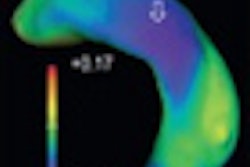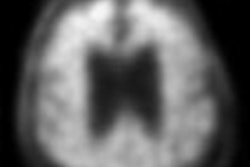
PET imaging of rhesus monkeys has shown how an overactive circuit in three regions of the brain may contribute to parent-to-child transmission of anxiety and depression.
Elevated activity in this prefrontal-limbic-midbrain circuit likely affects the in-born risk of developing anxiety in children of anxious parents, researchers found. Results of the study were published online July 6 in the Proceedings of the National Academy of Sciences.
Senior author Dr. Ned Kalin, chair of psychiatry at the University of Wisconsin School of Medicine and Public Health, said the findings are a big step in understanding the neural underpinnings of inherited anxiety and could provide more selective targets for treatment.
Kalin and colleagues studied anxiety-related behavior in approximately 600 young rhesus monkeys from a large multigenerational family. They used PET to examine the young monkeys during a mildly threatening situation, where a stranger did not make eye contact. The scenario was designed to mimic a situation that a human child might encounter.
By examining the PET results and anxiety-related behavior throughout the rhesus family, the researchers identified an overactive neural circuit that involved three brain regions. These regions were located in the brainstem, the most primitive part of the brain; the amygdala, the limbic brain fear center; and the prefrontal cortex, which is responsible for higher-level reasoning and is fully developed only in humans and their primate cousins.
Kalin and colleagues concluded that about 35% of variation in anxiety-like tendencies is explained by family history. They also noted that brain metabolism and not structure appeared to be behind the connection to anxiety.
The findings help explain how genes might affect brain function and lead to extreme human childhood anxiety, which greatly increases the risk of developing anxiety and depressive disorders.




















